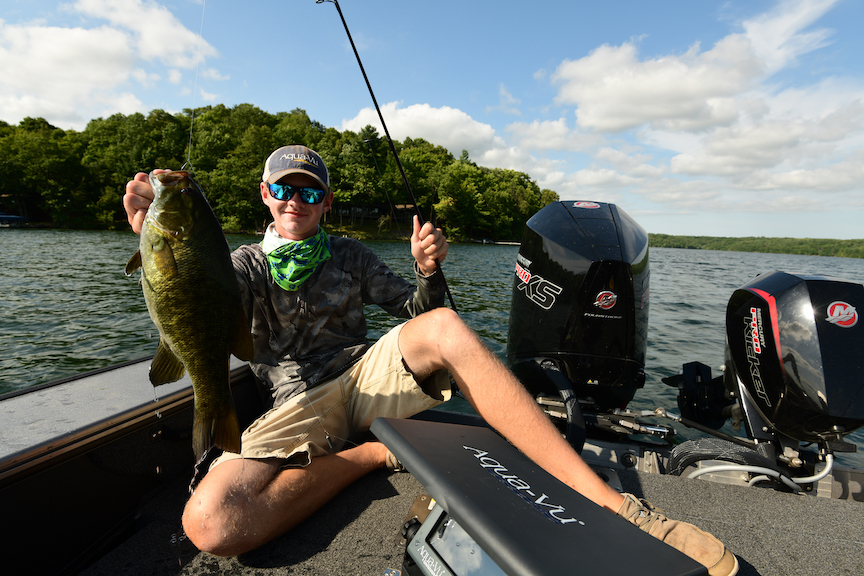
High school bass anglers win big via on-the-water screen time
Kids today have been brought up in the screen generation. It’s a big reason so many young anglers have such a natural affinity for an underwater camera. A depthfinder can only show you so much, but put an Aqua-Vu in front of a kid and watch them light up. It’s pure excitement, but it’s also a great way to help these future anglers learn fish behaviors and how they react to lures.
– Kolt Ringer, Aqua-Vu owner and board member, Student Angler Tournament Trail (MN)
As grown-ups will tell you, high-tech devices often come with the sting of confusion. That ‘overwhelmed’ emotion quickly turns to embarrassment when your son, niece or daughter picks up said device, taps two keys and smiles with total understanding. “See? It’s easy. Duh, Dad!”
Yet even for tech-savvy youth, interpreting sonar/fish-finder screens isn’t always so simple. For most anglers, it’s a constant question of “fish?” Or “something else?” And even when you’re sure the on-screen image is in fact a fish rather than a boulder, log or other underwater mystery, correctly sleuthing the right species feels like a shot in the dark. As competitive anglers of all ages continue to realize, however, an underwater camera offers an uncomplicated and immediately valuable path to more of the fish they seek.
For high-school angler Zach Hapka and his partner Vick Moyer, an Aqua-Vu underwater camera helped reveal the big smallmouth bass that ultimately produced Hapka’s second Minnesota Student Angler Tournament Trail Tournament of Champions win in three years. Held August 23 on Central Minnesota’s Lake Mille Lacs, the Tournament of Champions hosted the top 80 qualifying youth teams from across the state.
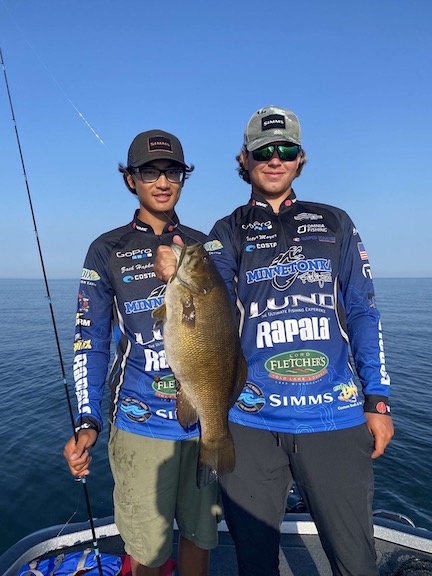
“We used the Aqua-Vu a lot in the days leading up to the championship,” noted Hapka, a Minnetonka, Minnesota high school senior. “We ran side imaging sonar over large boulder fields, dropping waypoints on spots that held the biggest rocks and where we could clearly see fish holding near ‘em. To stay in the running, we knew we’d need to find the big four and five pounders. By stopping on each spot and dropping the Aqua-Vu, we could quickly determine the size of bass living there.”
To further simplify his fish-finding gameplan, Hapka had equipped his Lowrance sonar unit with a Multi-Vu Pro Underwater Viewing System. The specialized HD camera system interfaces with any HDMI-video-ready sonar display, playing live, colorful Aqua-Vu video right on the sonar screen. The side-by-side sonar and camera interface provides instant comparisons between rendered sonar readings and real-world underwater video.

“The Aqua-Vu showed us that a lot of the rocks we originally found with sonar held big numbers of smaller 2 and 3 pound bass,” recalls Hapka. “The camera also helped us stay away from areas that held mostly walleyes, as opposed to bass. The two can look really similar on sonar. But the real-live video makes fish ID a no brainer.”
Hapka also called out the underwater camera’s value in patterning the lake’s biggest smallmouths. “The Aqua-Vu made it pretty obvious that the bigger groups of 4-pound fish were all in 20-plus feet of water, while the smaller fish were shallower. We also learned that giant boulders the size of the boat’s casting deck—especially isolated ones sitting in sand, rather than gravel or rubble—definitely attracted the biggest smallmouths. Some of these fish were absolute giants.”
On tournament day, Hapka and Moyer enjoyed the benefits of casting to fresh smallmouth bass that had not been subjected to lures and hooks during prefishing. “What happens is that a lot of anglers hook 20 or more bass during prefishing and then have a hard time catching them on tournament day because they’ve already caught the active biters in an area. The Aqua-Vu lets you prefish with your eyes only, while resting your best spots until tournament day.”

While the camera unearthed their location, Hapka and Moyer soon realized the big, tournament-winning bass were anything but easy to catch. “You had to put your dropshot rig right in front of the bass and just let it sit still before a fish would bite. We rotated our dropshot baits on every spot, showing fish different baits until we found the right combination.”
Following a final year on the Student Angler Tournament Trail, Hapka hopes to eventually find a job in the fishing industry. “I definitely plan to keep fishing tournaments after graduation,” Hapka says. “I just love fishing and enjoy being around the sport and the people. Whether I find work as a manufacturer’s sales rep, full time angler on one of the big tournament trails or some other capacity, I’m just looking forward to continuing to learn all I can about fishing and underwater fish behavior.”



Young anglers have a natural affinity for watching fish on an Aqua-Vu underwater camera. 
Zach Hapka (left) found big bass with his Aqua-Vu to help win the Minnesota State High School Tournament of Champions.

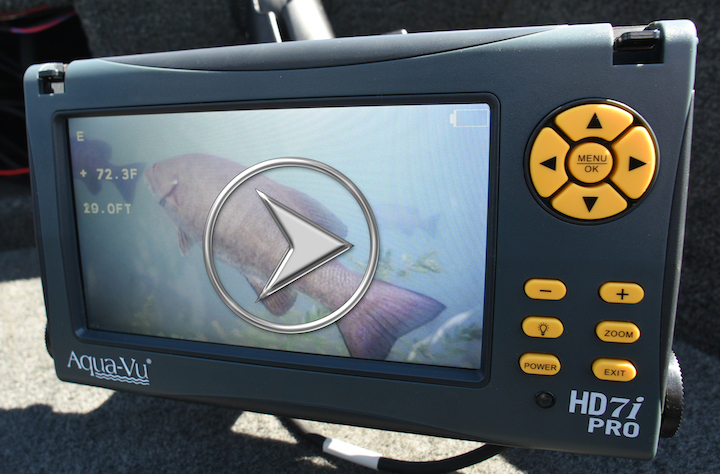
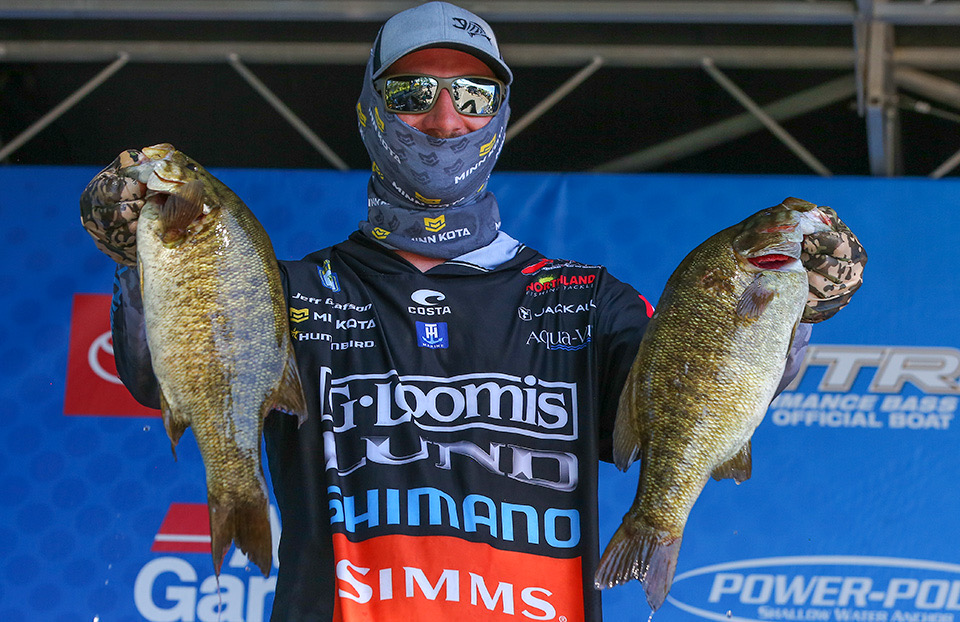
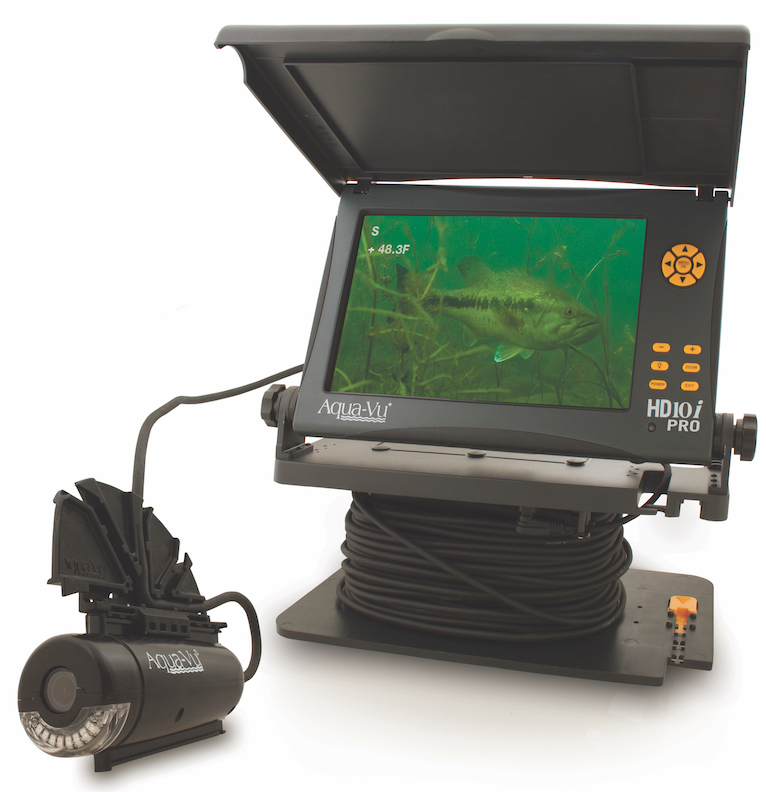


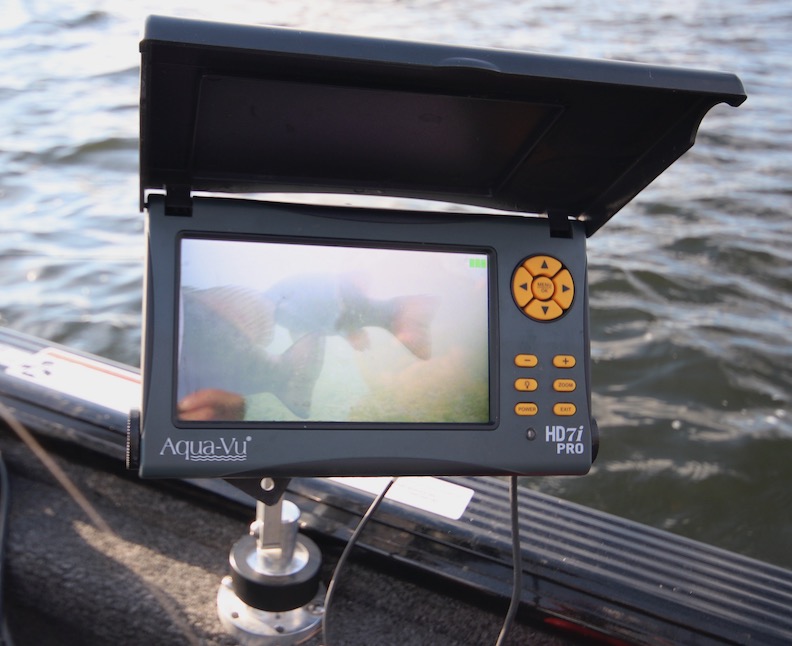
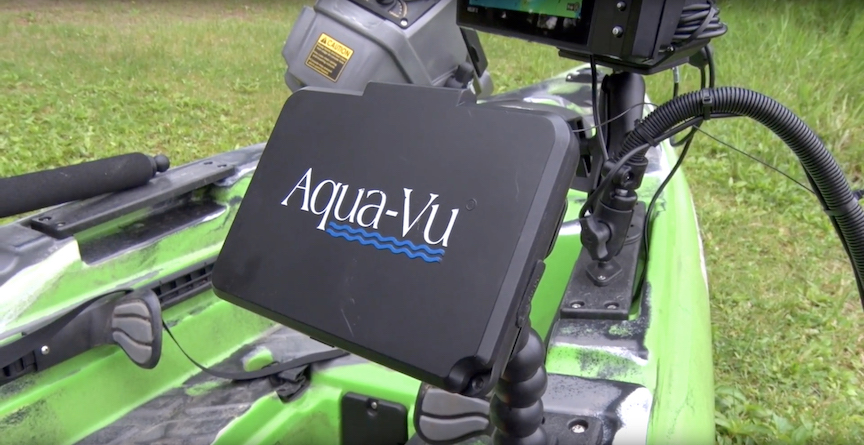 Think of it like a downsized bass boat that happens to afford stealth-access to untouched fishing spots. If you’re an angler the likes of
Think of it like a downsized bass boat that happens to afford stealth-access to untouched fishing spots. If you’re an angler the likes of 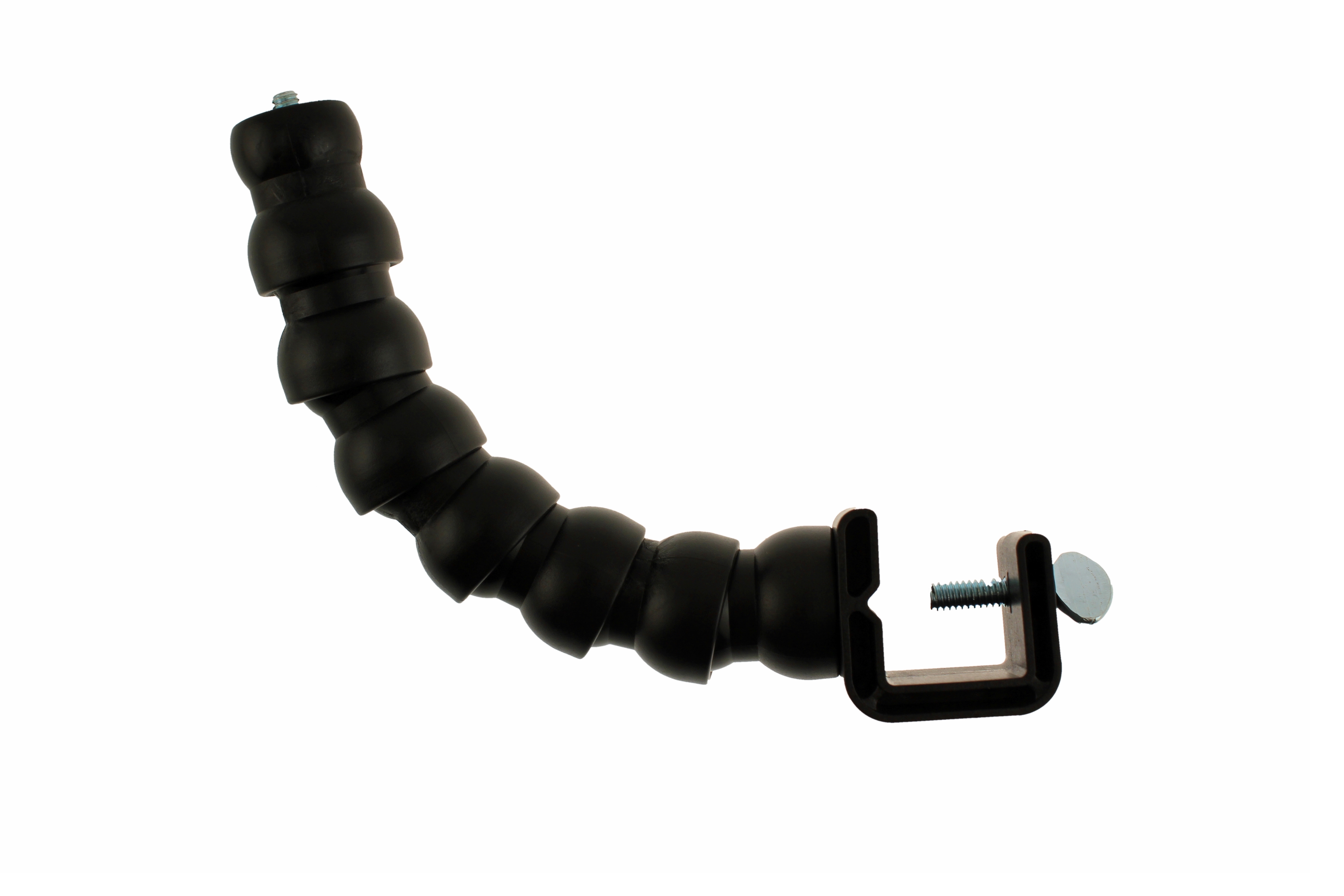
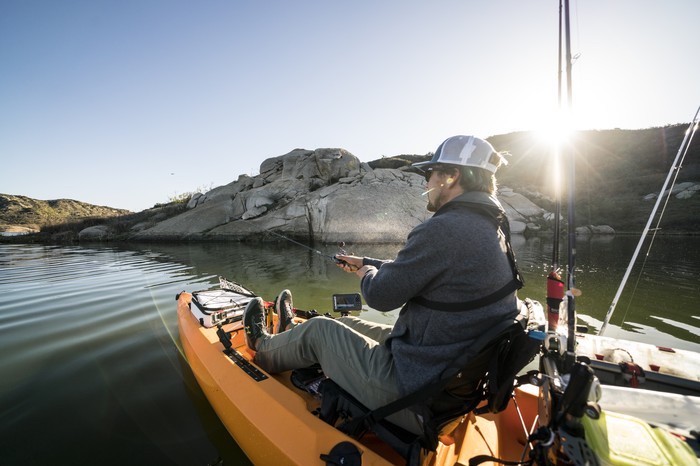 “Everything is powered by a single Dakota Lithium 23-amp battery, which is half the weight of a comparable sealed lead acid battery. Also keeps me juiced up for up to sixteen hours straight—either a really full day on the water or two or three normal days of fishing. The battery can fit into either the front hatch or right under my seat, secured in place with zip ties.”
“The storage space in these boats will blow you away,” adds Fischer, who admits to carrying a load of tackle, and up to 14 rods a day. “I can carry 12 rods—2 per slot, 6 per side—in the built-in rod racks on my Pro Angler. I like that they’re horizontal so I can sneak under bridges and trees without worrying about snapping tips.”
Strech notes Hobie’s ultra-versatile H-Crate, which fits perfectly in the space directly behind the seat. “The H-Crate Storage System is made for personalization,” suggests Strech. “Its integrated rod holders carry four combos, but can accommodate up to 10 or more with additional rod holders installed to the crate’s grid walls. The H-Crate also has four sections of H-Rail that serve as carry handles and accommodate extra accessories such as a tackle bin or Hobie’s new feature-rich
“Everything is powered by a single Dakota Lithium 23-amp battery, which is half the weight of a comparable sealed lead acid battery. Also keeps me juiced up for up to sixteen hours straight—either a really full day on the water or two or three normal days of fishing. The battery can fit into either the front hatch or right under my seat, secured in place with zip ties.”
“The storage space in these boats will blow you away,” adds Fischer, who admits to carrying a load of tackle, and up to 14 rods a day. “I can carry 12 rods—2 per slot, 6 per side—in the built-in rod racks on my Pro Angler. I like that they’re horizontal so I can sneak under bridges and trees without worrying about snapping tips.”
Strech notes Hobie’s ultra-versatile H-Crate, which fits perfectly in the space directly behind the seat. “The H-Crate Storage System is made for personalization,” suggests Strech. “Its integrated rod holders carry four combos, but can accommodate up to 10 or more with additional rod holders installed to the crate’s grid walls. The H-Crate also has four sections of H-Rail that serve as carry handles and accommodate extra accessories such as a tackle bin or Hobie’s new feature-rich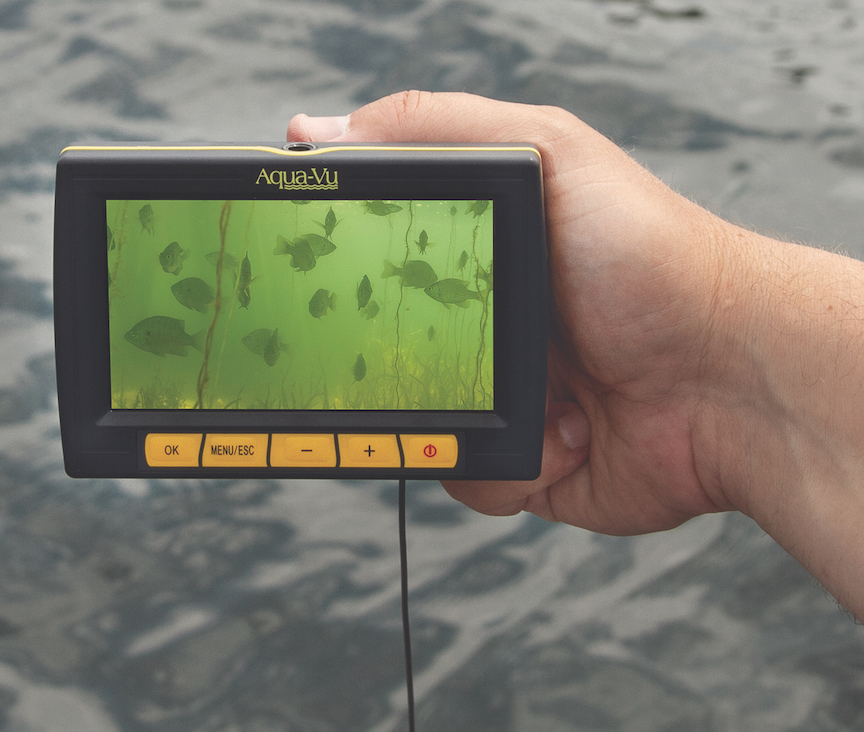 Beneath the hidden hatch at her feet lies a Hobie Rectangular Gear Bucket filled with the most important plastics or lures for the day’s fishing; pliers and other tools fit neatly into a cargo pocket built-into the underside of the hatch lid itself. The kayak is also armed with extra rubber mesh pockets alongside the seat, which Fischer uses for more tools and a
Beneath the hidden hatch at her feet lies a Hobie Rectangular Gear Bucket filled with the most important plastics or lures for the day’s fishing; pliers and other tools fit neatly into a cargo pocket built-into the underside of the hatch lid itself. The kayak is also armed with extra rubber mesh pockets alongside the seat, which Fischer uses for more tools and a 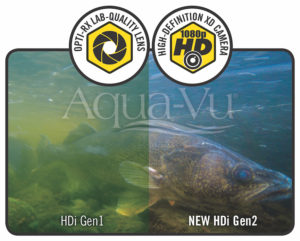
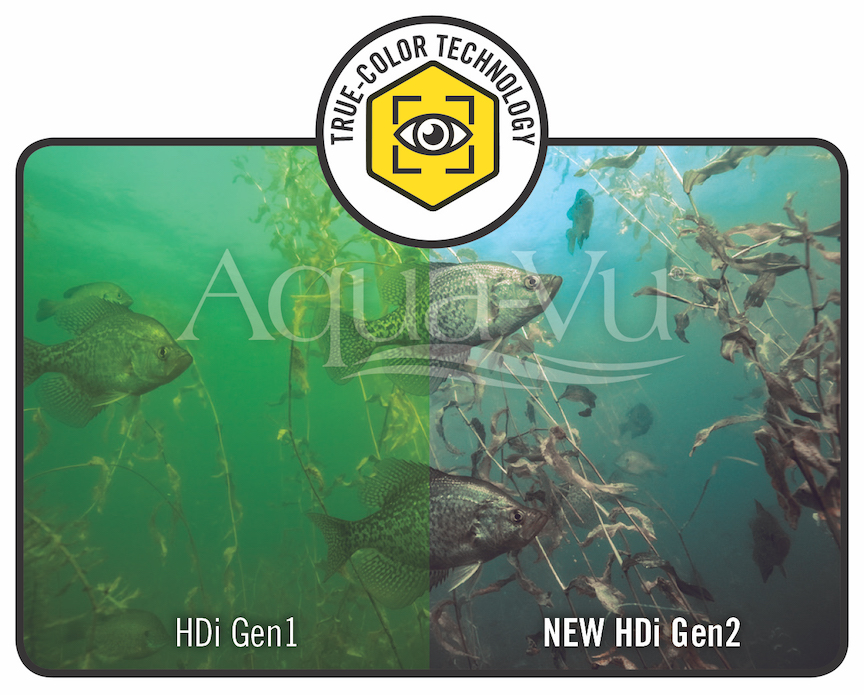
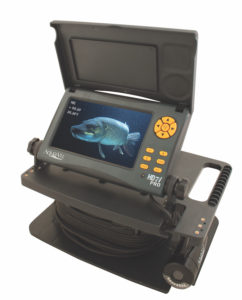
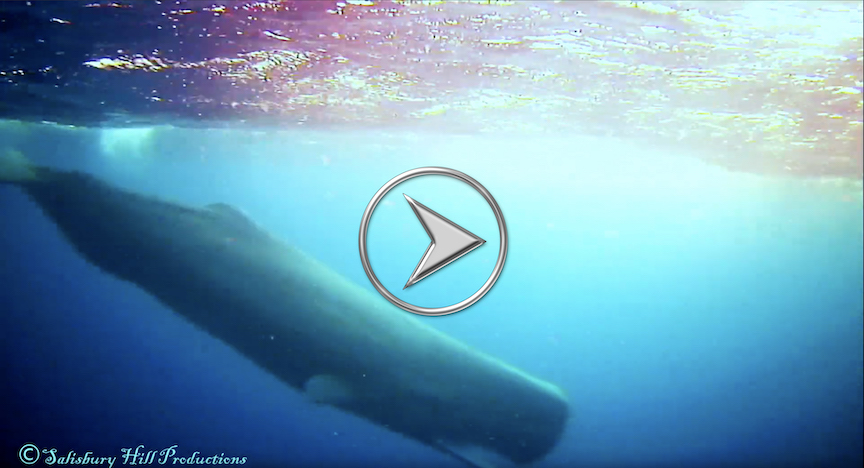
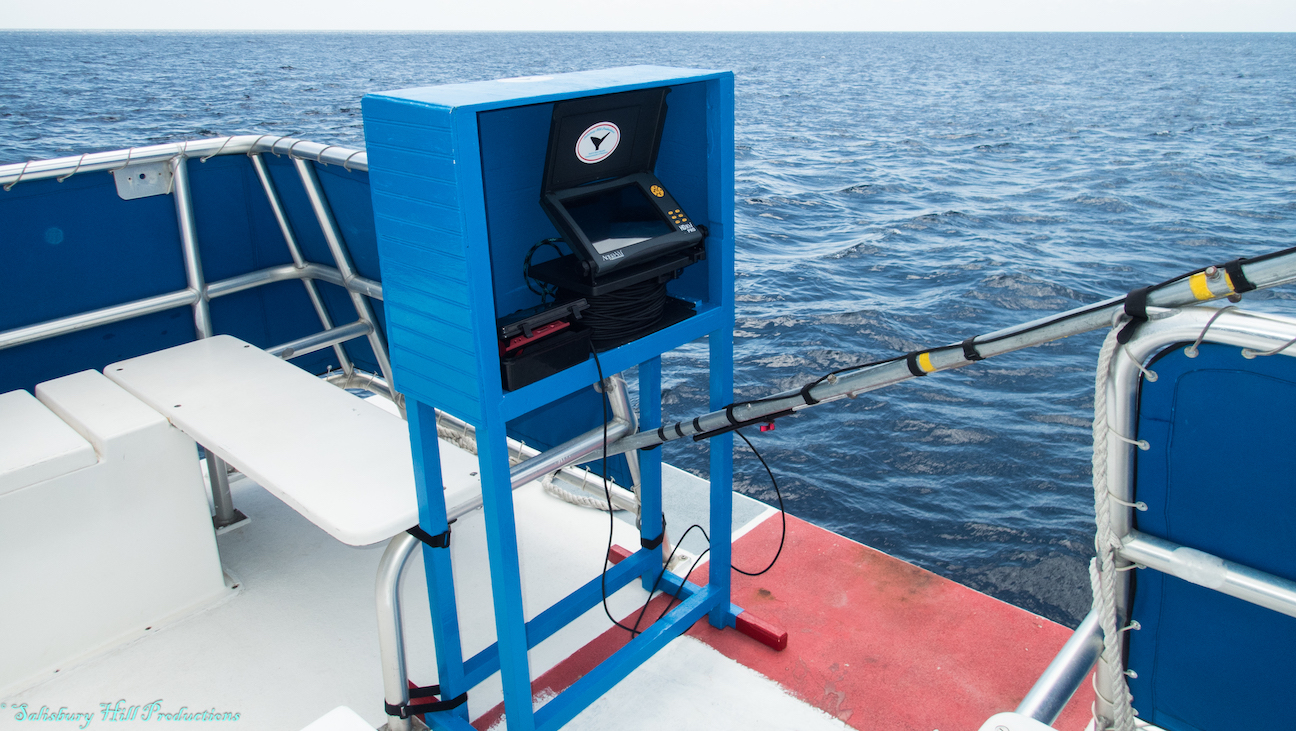 Rendell’s search lead him to
Rendell’s search lead him to 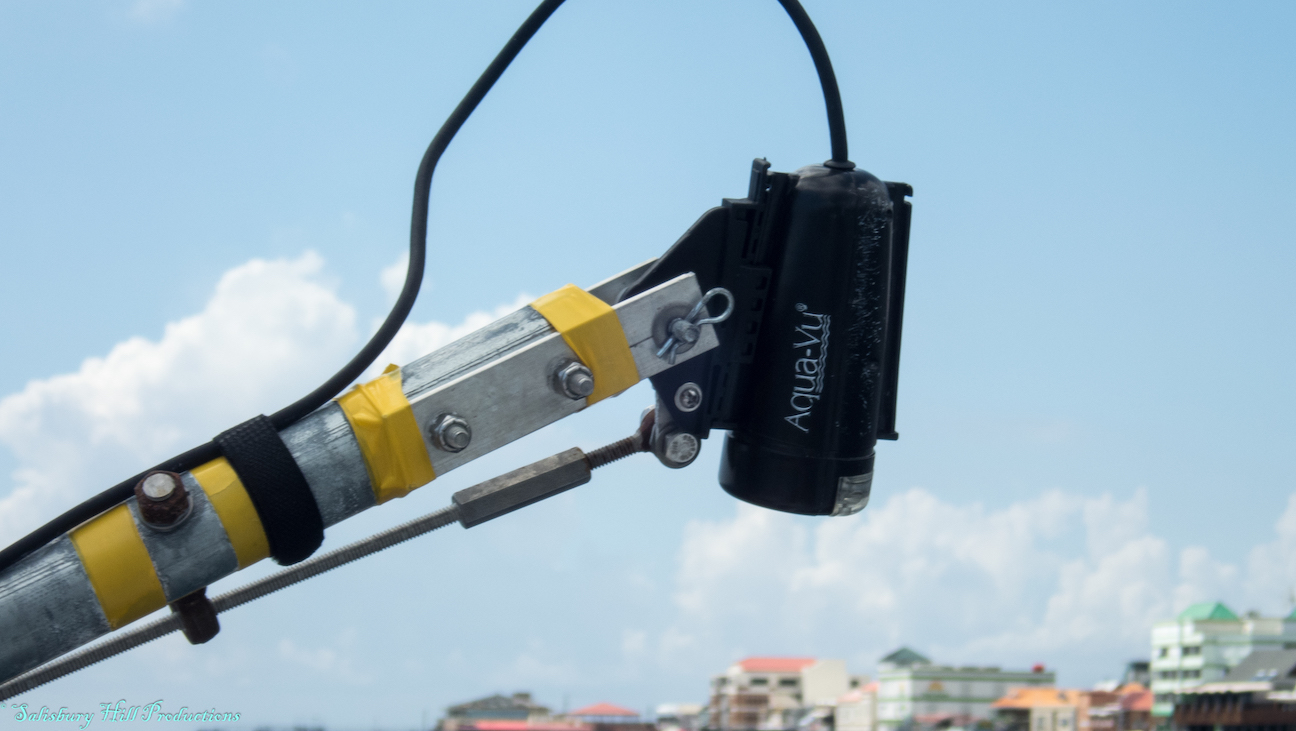 Daniel Perryman, owner of Dive Dominica, says the Aqua-Vu camera has helped make his whale watching expeditions the number one rated tour on the island. “The quality, durability and precision of this camera are amazing,” says Perryman. “It projects a crystal-clear picture and shows our guests amazing real-life imagery of our underwater friends. Unquestionably, the Aqua-Vu has pushed the envelope of the whale watching industry in our area.”
Populated by 22 different species of cetaceans, Dominica’s deep coastal waters provide feeding grounds for short-fin pilot whales, false killer whales, pygmy sperm whales and humpback whales—as well as huge pods of dolphins. The sperm whale is the largest predator on earth, reaching 70-feet and weighing 60 tons; Dominica is the only country in the world where the oceanic giant can be sighted year-around. Juvenile and female sperm whales do not migrate, while mature males roam to and from polar regions, mating in the warm waters of the Caribbean.
Daniel Perryman, owner of Dive Dominica, says the Aqua-Vu camera has helped make his whale watching expeditions the number one rated tour on the island. “The quality, durability and precision of this camera are amazing,” says Perryman. “It projects a crystal-clear picture and shows our guests amazing real-life imagery of our underwater friends. Unquestionably, the Aqua-Vu has pushed the envelope of the whale watching industry in our area.”
Populated by 22 different species of cetaceans, Dominica’s deep coastal waters provide feeding grounds for short-fin pilot whales, false killer whales, pygmy sperm whales and humpback whales—as well as huge pods of dolphins. The sperm whale is the largest predator on earth, reaching 70-feet and weighing 60 tons; Dominica is the only country in the world where the oceanic giant can be sighted year-around. Juvenile and female sperm whales do not migrate, while mature males roam to and from polar regions, mating in the warm waters of the Caribbean.
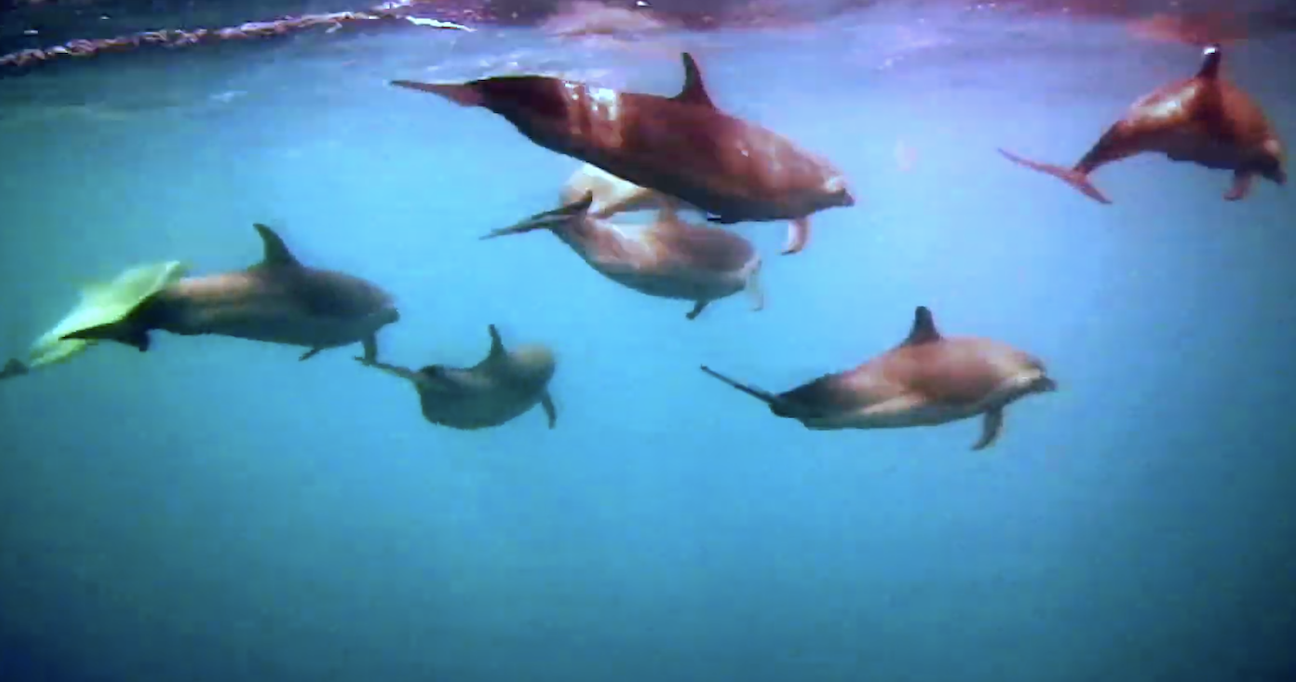 Adds Rendell: “We believe that the more people who safely experience the magic of these creatures—from our above-water perspective as well as from the animals’ own underwater viewpoint—the more we’ll invest in protecting the future of the species.”
Adds Rendell: “We believe that the more people who safely experience the magic of these creatures—from our above-water perspective as well as from the animals’ own underwater viewpoint—the more we’ll invest in protecting the future of the species.” 

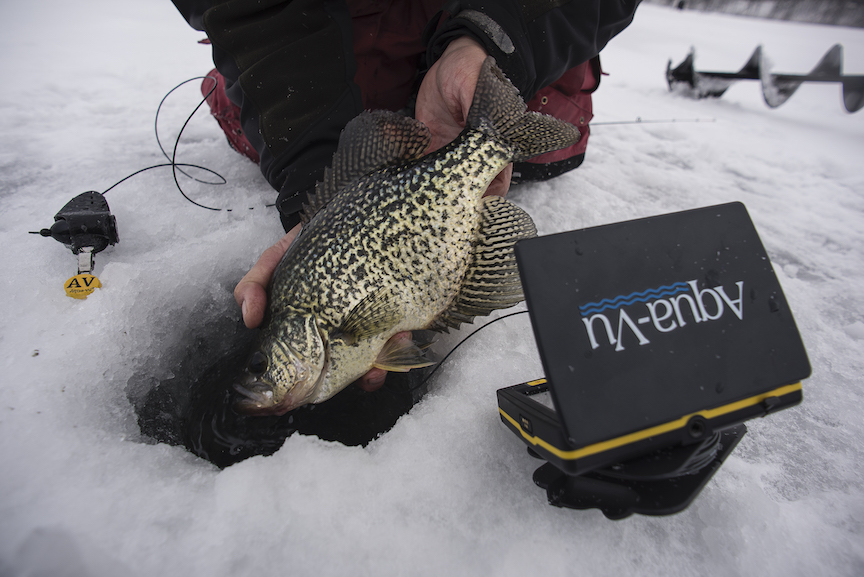
 Complementing the camera’s crystal-clear 1080p resolution, the new optics include innovative firmware that auto-adjusts white balance and adds natural colors back into the video image. Auto-Clear Technology™ yields an enhanced underwater picture, clarifying the image in off-colored, stained or moderately dirty water.
“This proprietary water-clearing technology projects a truer image by removing heavy color casts, such as red or green hues that often highlight algae and other suspended particulate,” adds Maschhoff. “When you look at the surface of a lake and see stained or coffee-colored water, for example, the Aqua-Vu HDi camera will surprise you with a much clearer underwater image than you’d expect.
“Scuba divers who have tested Auto-Clear technology have captured footage that seems impossibly clear compared to what they see with the naked eye.”
Angler and underwater explorer Kim Stricker has been astonished by the power of Aqua-Vu’s exclusive water-clearing technology. “The difference in clarity between what I saw through my scuba mask and the lens of the Aqua-Vu HDi camera absolutely blew me away,” said Stricker, referring to diving in water that appeared almost dark at 17 feet deep through his scuba mask. “The image on the Aqua-Vu HD screen looked almost like aquarium water, as if I was looking at an entirely different lake. This is amazing, breakthrough technology.”
While the camera’s internal organs process and augment the underwater image, a high-grade lens further focuses the video. “Gen 2 HDi cameras use a prescription-grade lens we call OptiRX,” says Maschhoff. “This premium lens is akin to a pair of expensive glasses you special-order from the optometrist compared to those you’d buy on a display rack at the grocery store. OptiRX Lenses have a smoother surface and much clearer prismatic finish. This quality of lens provides the purest picture of what the optics detect, with near-zero distorting or obscuring.”
Complementing the camera’s crystal-clear 1080p resolution, the new optics include innovative firmware that auto-adjusts white balance and adds natural colors back into the video image. Auto-Clear Technology™ yields an enhanced underwater picture, clarifying the image in off-colored, stained or moderately dirty water.
“This proprietary water-clearing technology projects a truer image by removing heavy color casts, such as red or green hues that often highlight algae and other suspended particulate,” adds Maschhoff. “When you look at the surface of a lake and see stained or coffee-colored water, for example, the Aqua-Vu HDi camera will surprise you with a much clearer underwater image than you’d expect.
“Scuba divers who have tested Auto-Clear technology have captured footage that seems impossibly clear compared to what they see with the naked eye.”
Angler and underwater explorer Kim Stricker has been astonished by the power of Aqua-Vu’s exclusive water-clearing technology. “The difference in clarity between what I saw through my scuba mask and the lens of the Aqua-Vu HDi camera absolutely blew me away,” said Stricker, referring to diving in water that appeared almost dark at 17 feet deep through his scuba mask. “The image on the Aqua-Vu HD screen looked almost like aquarium water, as if I was looking at an entirely different lake. This is amazing, breakthrough technology.”
While the camera’s internal organs process and augment the underwater image, a high-grade lens further focuses the video. “Gen 2 HDi cameras use a prescription-grade lens we call OptiRX,” says Maschhoff. “This premium lens is akin to a pair of expensive glasses you special-order from the optometrist compared to those you’d buy on a display rack at the grocery store. OptiRX Lenses have a smoother surface and much clearer prismatic finish. This quality of lens provides the purest picture of what the optics detect, with near-zero distorting or obscuring.”
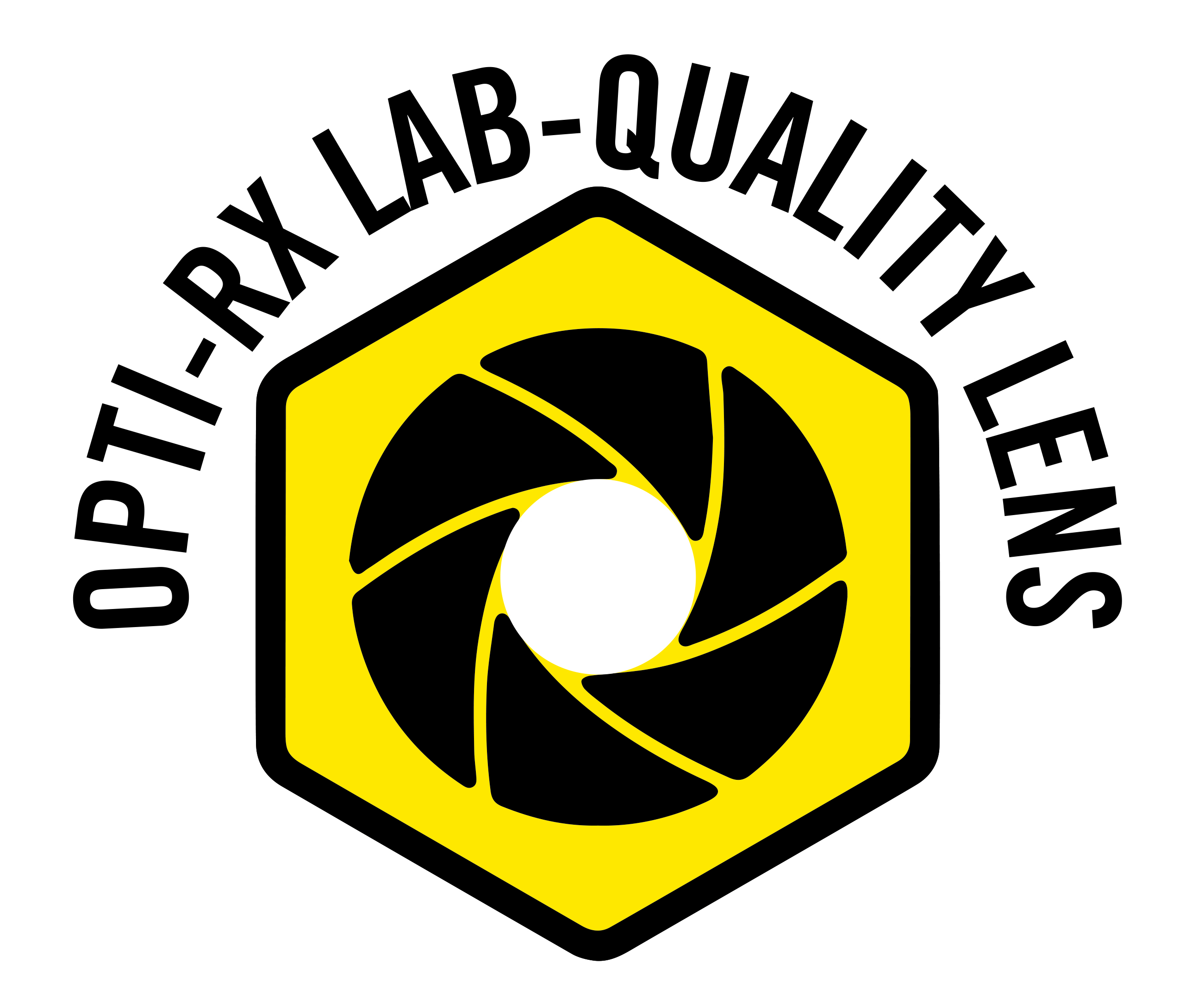 From lens to LCD, Aqua-Vu has also innovated what the angler sees on the other side of the surface. Each of four Aqua-Vu HDi Camera Systems project a super-bright underwater image, utilizing up to 2,200-nits for maximum visibility in sunlight. A new Power Saver feature allows the user to add up to 40-percent more run-time, particularly when viewing the LCD in lower sun conditions, including inside an ice fishing shelter.
The first to engineer a high-definition underwater viewing system, Aqua-Vu HDi Gen 2 models include
From lens to LCD, Aqua-Vu has also innovated what the angler sees on the other side of the surface. Each of four Aqua-Vu HDi Camera Systems project a super-bright underwater image, utilizing up to 2,200-nits for maximum visibility in sunlight. A new Power Saver feature allows the user to add up to 40-percent more run-time, particularly when viewing the LCD in lower sun conditions, including inside an ice fishing shelter.
The first to engineer a high-definition underwater viewing system, Aqua-Vu HDi Gen 2 models include 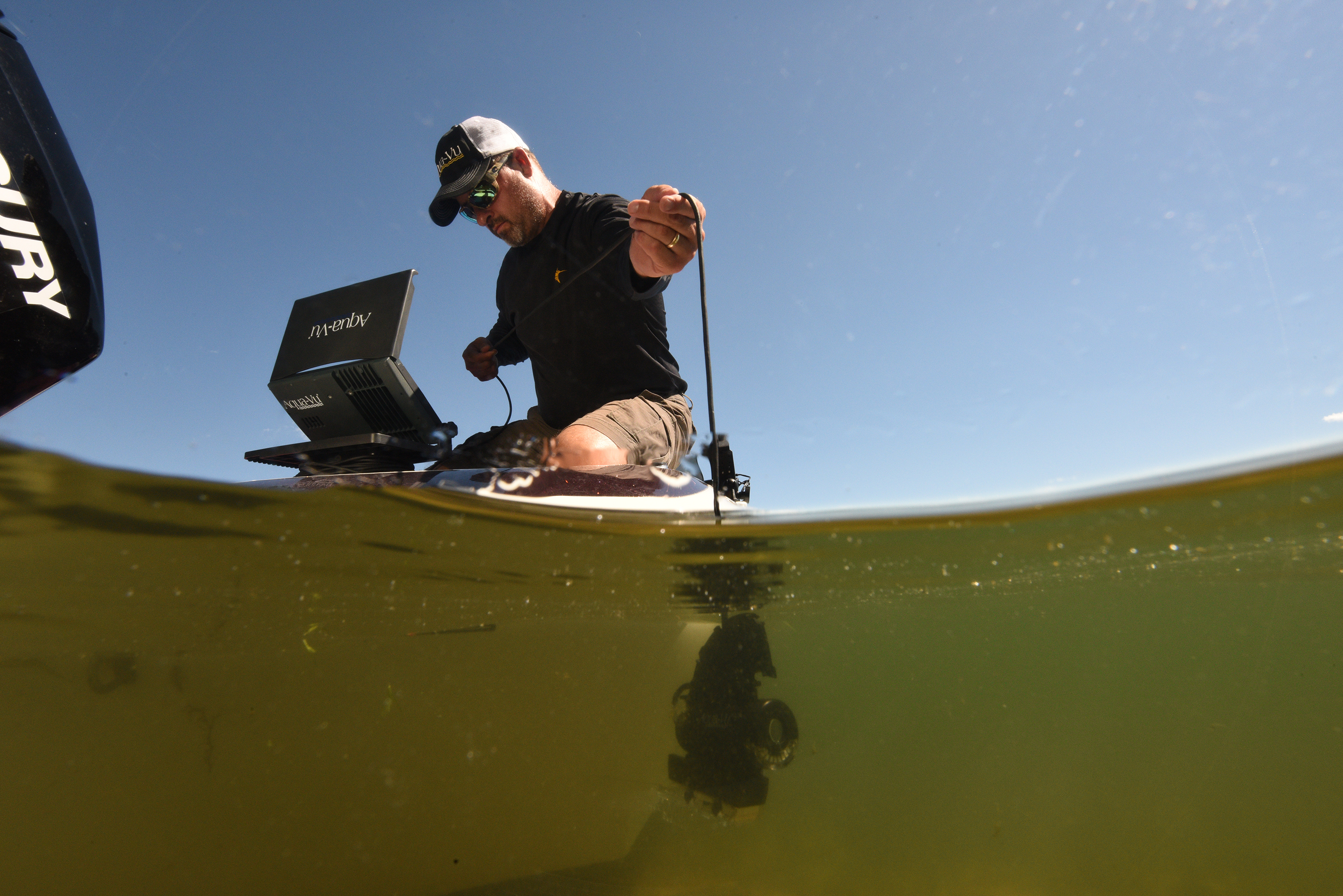 About Aqua-Vu
The Original Underwater Viewing System, Aqua-Vu is manufactured by Outdoors Insight, Inc., and has led the underwater camera category in design, innovation and quality since 1997. They were also the first with on-screen displays of water temp, depth and camera direction, LCD monitor, IR and LED light systems, DVRs and now Digital Zoom. The Central Minnesota based company builds other popular outdoors products as well, such as the iBall Trailer Hitch Camera (iballhitchcam.com). For more information on Aqua-Vu, visit
About Aqua-Vu
The Original Underwater Viewing System, Aqua-Vu is manufactured by Outdoors Insight, Inc., and has led the underwater camera category in design, innovation and quality since 1997. They were also the first with on-screen displays of water temp, depth and camera direction, LCD monitor, IR and LED light systems, DVRs and now Digital Zoom. The Central Minnesota based company builds other popular outdoors products as well, such as the iBall Trailer Hitch Camera (iballhitchcam.com). For more information on Aqua-Vu, visit 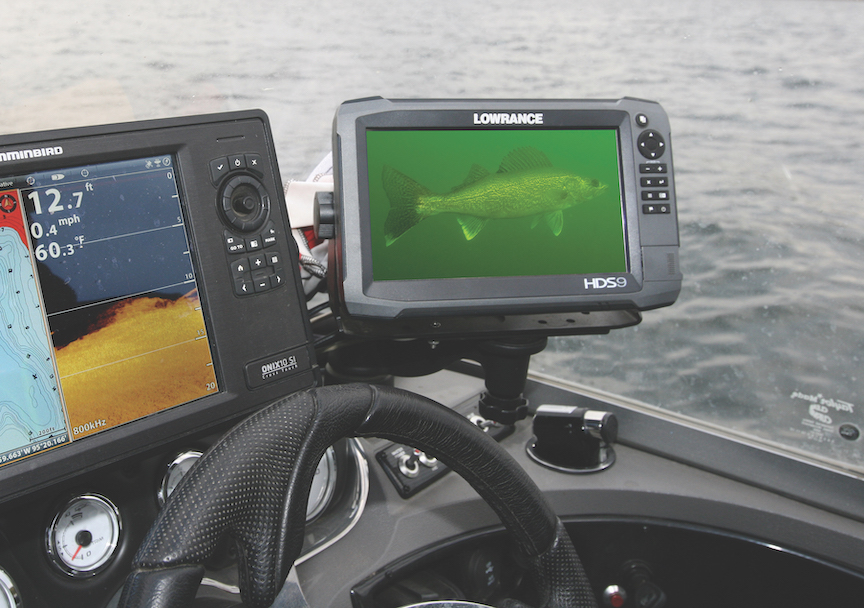 Crosslake, MN– Similar to your tablet or smartphone, modern sonar units now offer an expansive array of interesting apps. Most valuable for anglers, top-end sonar-GPS screens now provide video compatibility, and the ability to play live underwater action when connected to an Aqua-Vu camera. For ice anglers who fish from luxury hardwater houses, the same simple connection fills the TV screen with crystal clear underwater video—a live fishing play-by-play that keeps everyone engaged in what’s happening below.
The ultimate in fish-finding technology for over two decades, Aqua-Vu recently introduced
Crosslake, MN– Similar to your tablet or smartphone, modern sonar units now offer an expansive array of interesting apps. Most valuable for anglers, top-end sonar-GPS screens now provide video compatibility, and the ability to play live underwater action when connected to an Aqua-Vu camera. For ice anglers who fish from luxury hardwater houses, the same simple connection fills the TV screen with crystal clear underwater video—a live fishing play-by-play that keeps everyone engaged in what’s happening below.
The ultimate in fish-finding technology for over two decades, Aqua-Vu recently introduced 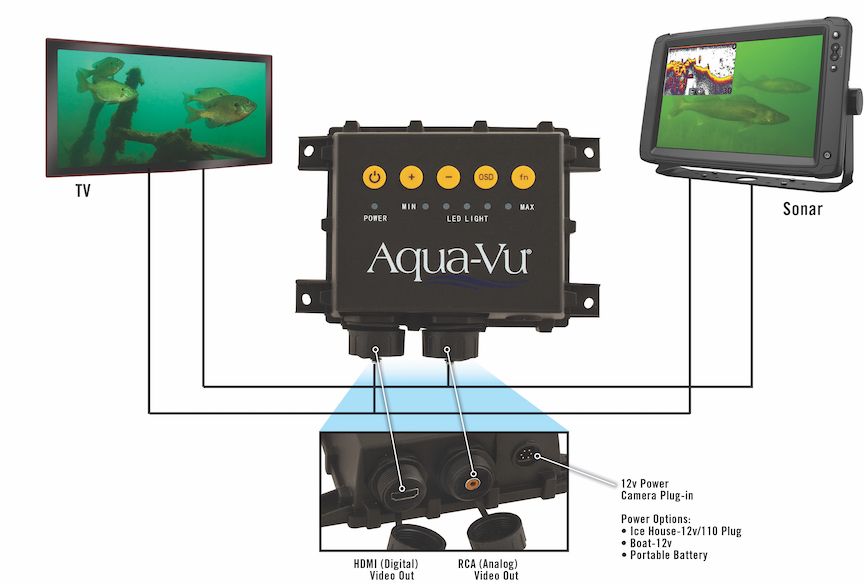 “The Multi-Vu Pro system provides instant connectivity between my Aqua-Vu camera and my big screen sonar,” says professional angler and electronics wizard, “Doctor Sonar” Bruce Samson. “High definition underwater video gives me a superior view of my fishing area, in the sharpest, brightest, and most amazing sunlight viewable picture available. The ability to view sonar signals side-by-side with real-time underwater video is a remarkable advantage, confirming fish species and the true-to-life appearance and layout of structure.”
Complete with a high-definition Aqua-Vu XD™ underwater camera (with 75-feet of cable), Camera-Cable Shuttle and Control Module, the Multi-Vu Pro System (MSRP $699) features both analog (RCA) or digital HD (HDMI) video compatibility. Also included is a 12-volt power cable for connection to an auxiliary power source, such as an on-board battery.
Camera Control Module includes power on/off switch and infrared (IR) lighting dimmer switch for adjusting IR light intensity of the Aqua-Vu camera optics. For connection to HDMI or RCA enabled TV or sonar units, Aqua-Vu offers optional HDMI Video or RCA Video cords, with IP67 waterproof connections.
“The Multi-Vu Pro system provides instant connectivity between my Aqua-Vu camera and my big screen sonar,” says professional angler and electronics wizard, “Doctor Sonar” Bruce Samson. “High definition underwater video gives me a superior view of my fishing area, in the sharpest, brightest, and most amazing sunlight viewable picture available. The ability to view sonar signals side-by-side with real-time underwater video is a remarkable advantage, confirming fish species and the true-to-life appearance and layout of structure.”
Complete with a high-definition Aqua-Vu XD™ underwater camera (with 75-feet of cable), Camera-Cable Shuttle and Control Module, the Multi-Vu Pro System (MSRP $699) features both analog (RCA) or digital HD (HDMI) video compatibility. Also included is a 12-volt power cable for connection to an auxiliary power source, such as an on-board battery.
Camera Control Module includes power on/off switch and infrared (IR) lighting dimmer switch for adjusting IR light intensity of the Aqua-Vu camera optics. For connection to HDMI or RCA enabled TV or sonar units, Aqua-Vu offers optional HDMI Video or RCA Video cords, with IP67 waterproof connections.
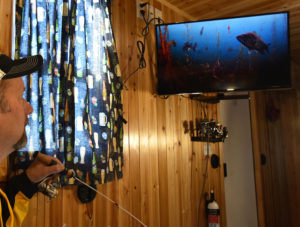 “The Multi-Vu Pro system is a powerful tool for tournament prefishing,” adds Mark Lassagne, who scouts with underwater optics on West Coast bass waters, such as Clear Lake and the California Delta. “If my sonar marks a fish, I can quickly drop the Aqua-Vu and see if it’s a bass, as opposed to a carp or other species. I can also uncover fish hiding in heavy brush or grass; these fish aren’t always possible to discern on the meter (sonar).”
The Aqua-Vu Multi-Vu Pro System upgrades any video enabled sonar or LCD with live, HD or analog video functionality. Run underwater video side-by-side with a digital mapping window and drop waypoints on individual big fish. Play live Aqua-Vu imagery simultaneously with sonar and remove all the question marks. The new Aqua-Vu is perfect for boat-mounted sonar displays or a TV inside a wheeled
“The Multi-Vu Pro system is a powerful tool for tournament prefishing,” adds Mark Lassagne, who scouts with underwater optics on West Coast bass waters, such as Clear Lake and the California Delta. “If my sonar marks a fish, I can quickly drop the Aqua-Vu and see if it’s a bass, as opposed to a carp or other species. I can also uncover fish hiding in heavy brush or grass; these fish aren’t always possible to discern on the meter (sonar).”
The Aqua-Vu Multi-Vu Pro System upgrades any video enabled sonar or LCD with live, HD or analog video functionality. Run underwater video side-by-side with a digital mapping window and drop waypoints on individual big fish. Play live Aqua-Vu imagery simultaneously with sonar and remove all the question marks. The new Aqua-Vu is perfect for boat-mounted sonar displays or a TV inside a wheeled 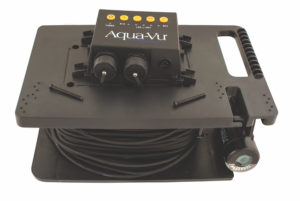 Multi-Vu™Pro System Specs:
Multi-Vu™Pro System Specs:
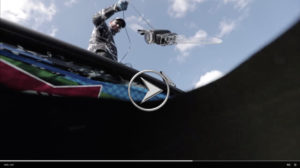
 “I’ve definitely got my eye on stages five and six of the Bass Pro Tour,” DeFoe recently remarked. “The Smith Lake, Alabama event at should be really interesting. A lot of the bigger bass are deepwater spawners. If it’s even the slightest bit choppy on the surface, you won’t see them, and can easily drive your boat right past them.
“A big part of my gameplan will be to scout with my Aqua-Vu
“I’ve definitely got my eye on stages five and six of the Bass Pro Tour,” DeFoe recently remarked. “The Smith Lake, Alabama event at should be really interesting. A lot of the bigger bass are deepwater spawners. If it’s even the slightest bit choppy on the surface, you won’t see them, and can easily drive your boat right past them.
“A big part of my gameplan will be to scout with my Aqua-Vu 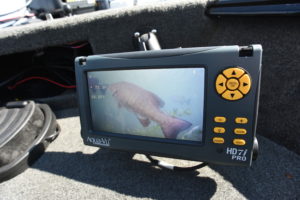 While the Aqua-Vu camera can be deployed and manipulated via attached ballast weights and stabilizing trolling fin, DeFoe often makes use of another tool for precisely probing bass beds or peaking beneath boat docks and other shallow cover. “I can actually attach the camera optics directly to the end of my Superstick push pole, using an Aqua-Vu
While the Aqua-Vu camera can be deployed and manipulated via attached ballast weights and stabilizing trolling fin, DeFoe often makes use of another tool for precisely probing bass beds or peaking beneath boat docks and other shallow cover. “I can actually attach the camera optics directly to the end of my Superstick push pole, using an Aqua-Vu 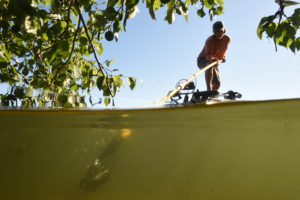 At a 2018 visit to the St. Lawrence River—a late August Bassmaster Elite Series event—
At a 2018 visit to the St. Lawrence River—a late August Bassmaster Elite Series event—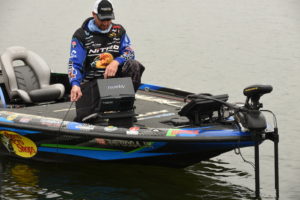 DeFoe adds that he often simply uses the camera to confirm or disprove what he’s seeing on sonar. “It’s awesome for showing bass that get lost in cover—grass, brushpiles or under docks. I like to watch how they’re relating to the cover; how they move around and alongside it. Fun to watch all this on screen. My kids love it. But it’s also a great learning tool that can help determine patterns or even indicate what type of presentation will work best.”
“The good and bad about using a camera,” DeFoe laughs, “is that it finds them with 100-percent certainty, but doesn’t guarantee they’ll bite.”
DeFoe adds that he often simply uses the camera to confirm or disprove what he’s seeing on sonar. “It’s awesome for showing bass that get lost in cover—grass, brushpiles or under docks. I like to watch how they’re relating to the cover; how they move around and alongside it. Fun to watch all this on screen. My kids love it. But it’s also a great learning tool that can help determine patterns or even indicate what type of presentation will work best.”
“The good and bad about using a camera,” DeFoe laughs, “is that it finds them with 100-percent certainty, but doesn’t guarantee they’ll bite.” 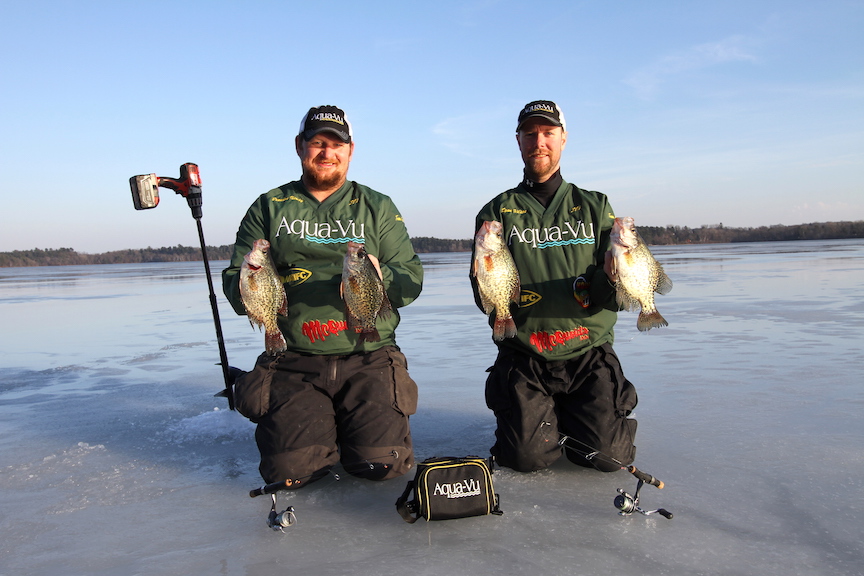 Crosslake, MN – It was a dazzling display of underwater spy-work. Team Aqua-Vu anglers Brandon Newby and Ryan Wilson won the recent 2018
Crosslake, MN – It was a dazzling display of underwater spy-work. Team Aqua-Vu anglers Brandon Newby and Ryan Wilson won the recent 2018  To locate tournament winning bluegills and crappies on 900-acre North Twin Lake, the team drilled hundreds of holes with their Milwaukee ice drills, spying through each one via underwater optics. When asked how much of the lake they covered in prefishing, Newby replied: “All of it.”
“The color and clarity of the new
To locate tournament winning bluegills and crappies on 900-acre North Twin Lake, the team drilled hundreds of holes with their Milwaukee ice drills, spying through each one via underwater optics. When asked how much of the lake they covered in prefishing, Newby replied: “All of it.”
“The color and clarity of the new 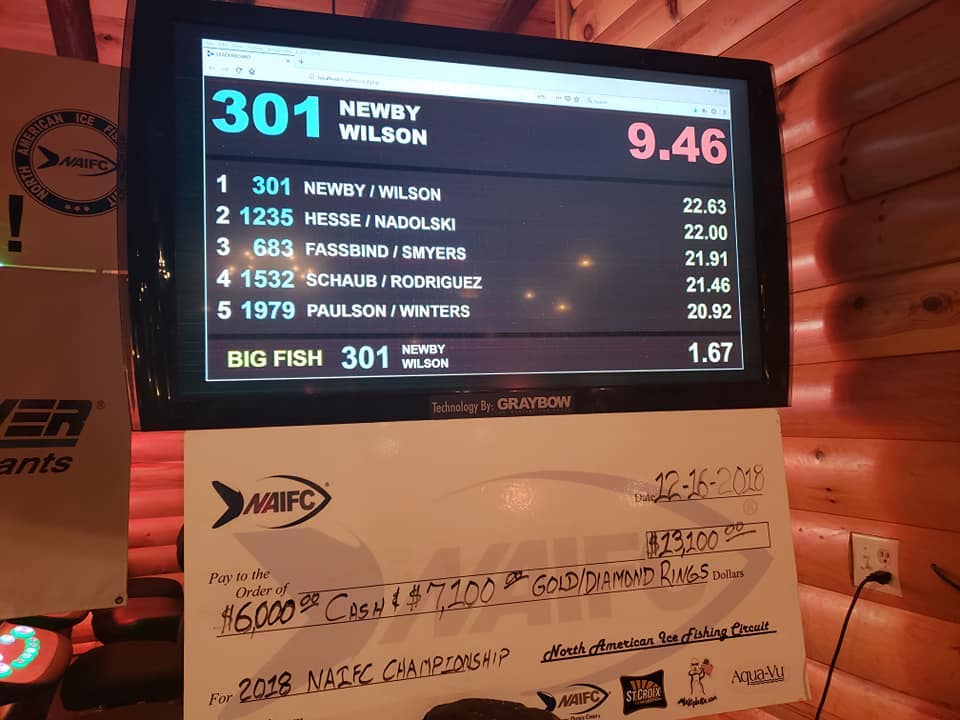 Site of the second tournament day, South Twin Lake is known for its plentiful smaller panfish. Newby believed scoring a big weight here would be difficult. Indeed, on day one at North Twin, the duo iced 8 sunfish and 8 crappies for 13.17-pounds, including a whopper 15-inch, 1.67-pound black crappie—enough for a slim lead over fellow Aqua-Vu pros and eventual 3rdplace finishers Kevin Fassbind and Nick Smyers.
“During prefishing, we realized the spots we found last year were out of play, they’d become community holes,” Newby recalled. “We went into search mode and literally covered the entire lake in search of new fish. One of the things we try to preach is that every lake has multiple spots that hold good fish, not just the same old community holes.”
“Brandon and I like to go off in different directions, each armed with a drill and an Aqua-Vu and cover twice as much ice,” said Wilson. This year, the team employed a custom-made 3-inch auger bit—just wide enough to fit the camera optics, and yet small enough to disappear overnight and keep a sonar transducer out of the hole.
“For stealth reasons, we don’t fish for panfish during prefishing,” he continued. “But to break up the work of constantly drilling, we like to stop and catch a pike or bass every now and then. You don’t want to put any panfish on the ice because it’s just one more way to invite followers.
“Honestly, we weren’t looking for a motherlode of fish,” Wilson admitted. “We wanted to find spots with fewer panfish that other teams might overlook. What we found were a couple nice pods of bluegills and crappies slowly working soft-bottom basin areas beyond shallower decaying vegetation. We had our money spot almost entirely to ourselves— a rare luxury.”
Day two on deeper South Twin, a whole other pattern awaited. “The panfish on South Twin are constantly hounded by pike and bass,” noted Newby. “It keeps the ‘gills and crappies constantly on the move. You’d put the camera down and watch a school of bluegills moving at mach-10. You might catch one, but the school would be long gone by the time you made the next drop.”
With just an hour remaining on day-two, Newby and Wilson had their eight crappies, but only a few sunfish in their buckets. “We went into head-hunter mode, looking for one bluegill at a time with the camera,” Wilson recalled.
Site of the second tournament day, South Twin Lake is known for its plentiful smaller panfish. Newby believed scoring a big weight here would be difficult. Indeed, on day one at North Twin, the duo iced 8 sunfish and 8 crappies for 13.17-pounds, including a whopper 15-inch, 1.67-pound black crappie—enough for a slim lead over fellow Aqua-Vu pros and eventual 3rdplace finishers Kevin Fassbind and Nick Smyers.
“During prefishing, we realized the spots we found last year were out of play, they’d become community holes,” Newby recalled. “We went into search mode and literally covered the entire lake in search of new fish. One of the things we try to preach is that every lake has multiple spots that hold good fish, not just the same old community holes.”
“Brandon and I like to go off in different directions, each armed with a drill and an Aqua-Vu and cover twice as much ice,” said Wilson. This year, the team employed a custom-made 3-inch auger bit—just wide enough to fit the camera optics, and yet small enough to disappear overnight and keep a sonar transducer out of the hole.
“For stealth reasons, we don’t fish for panfish during prefishing,” he continued. “But to break up the work of constantly drilling, we like to stop and catch a pike or bass every now and then. You don’t want to put any panfish on the ice because it’s just one more way to invite followers.
“Honestly, we weren’t looking for a motherlode of fish,” Wilson admitted. “We wanted to find spots with fewer panfish that other teams might overlook. What we found were a couple nice pods of bluegills and crappies slowly working soft-bottom basin areas beyond shallower decaying vegetation. We had our money spot almost entirely to ourselves— a rare luxury.”
Day two on deeper South Twin, a whole other pattern awaited. “The panfish on South Twin are constantly hounded by pike and bass,” noted Newby. “It keeps the ‘gills and crappies constantly on the move. You’d put the camera down and watch a school of bluegills moving at mach-10. You might catch one, but the school would be long gone by the time you made the next drop.”
With just an hour remaining on day-two, Newby and Wilson had their eight crappies, but only a few sunfish in their buckets. “We went into head-hunter mode, looking for one bluegill at a time with the camera,” Wilson recalled.
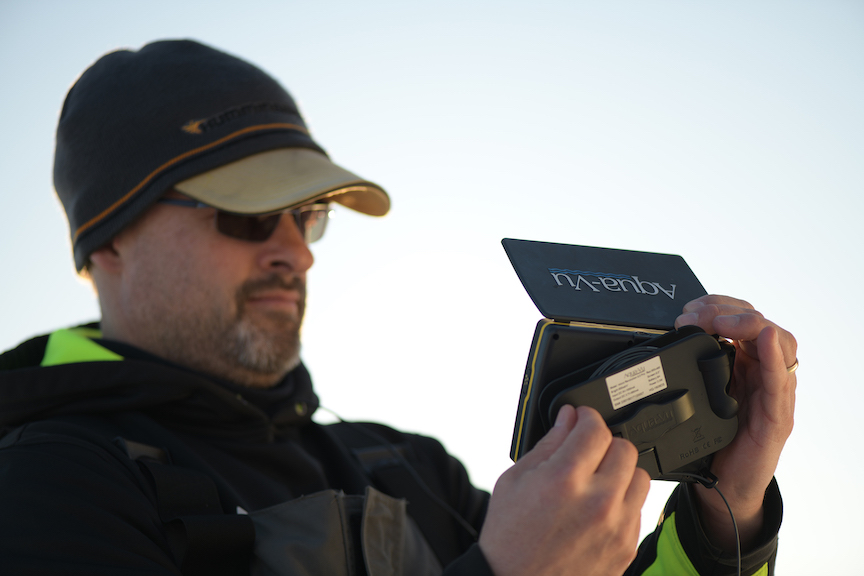 Then, like a diamond in the rough, a bountiful patch of vegetation appeared on the camera screen, full of sunfish. “As soon as we set up on the spot, we had two other teams pull up on us. But we managed to pop six bluegills just in time; that little sweet spot—and a few other tricks— absolutely won the tournament for us.” //
For more details on the North American Ice Fishing Circuit, including full tournament coverage, visit their website,
Then, like a diamond in the rough, a bountiful patch of vegetation appeared on the camera screen, full of sunfish. “As soon as we set up on the spot, we had two other teams pull up on us. But we managed to pop six bluegills just in time; that little sweet spot—and a few other tricks— absolutely won the tournament for us.” //
For more details on the North American Ice Fishing Circuit, including full tournament coverage, visit their website,